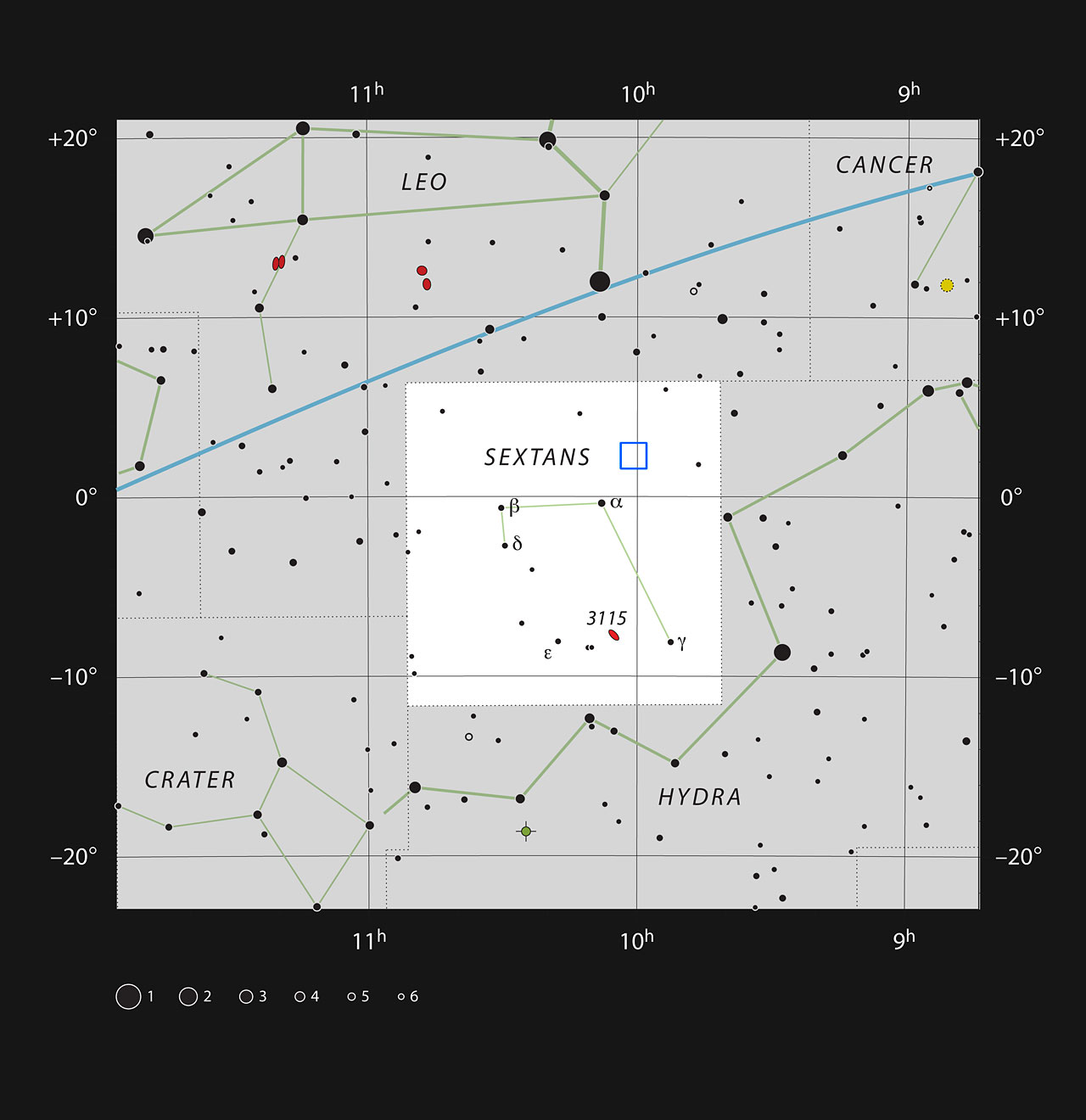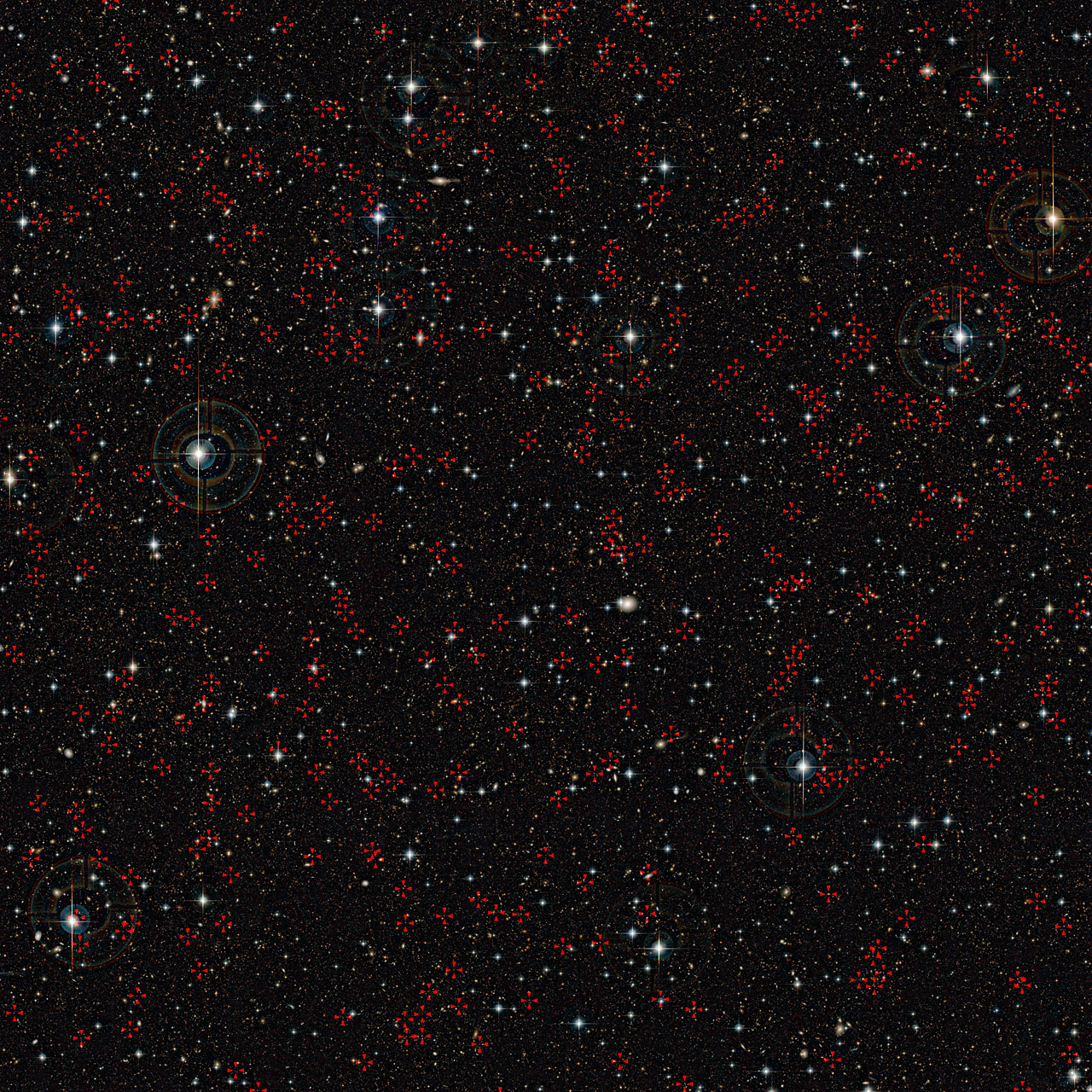But a supermassive black hole can obviously be activated, even if it can't be done on Earth. And it doesn't require galactic collisions, according to a new study combining data from ESO’s Very Large Telescope and ESA’s XMM-Newton X-ray space observatory which says the huge black holes in the centers of galaxies in the past 11 billion years were not turned on by mergers between galaxies, as had been previously thought.
At the heart of most, if not all, large galaxies lurks a supermassive black hole with a mass millions or even billions times greater than that of the Sun. In some, like our own Milky Way, the central black hole is quiet but others gave off intense radiation as its material fell into the black hole.
But something separates a quiet black hole like ours from others. Where does the material comes from to activate a sleeping black hole and create an active galactic nucleus? Up to now, many astronomers thought that most of these active nuclei were turned on when two galaxies merge or when they pass close to each other and the disrupted material becomes fuel for the central black hole. However, new results indicate that this idea may be wrong for many active galaxies.
An international team of scientists from the COSMOS collaboration have now looked in detail at more than 600 of these active galaxies in an extensively studied patch of the sky called the COSMOS field (an area about ten times that of the full Moon, in the constellation of Sextans - The Sextant) and they found that extremely brilliant active nuclei were rare, while the bulk of the active galaxies in the past 11 billion years were only moderately bright; however, the new data showed that the majority of these more common, less bright active galaxies, even looking back far into the past, were not triggered by mergers between galaxies.

The location of the COSMOS field in the constellation of Sextans (The Sextant). This map shows most of the stars visible to the unaided eye under good conditions, and the COSMOS field is marked as a blue square. Through a small telescope nothing can be seen here apart from a few faint stars, but this small patch of sky has been studied in great detail by telescopes on the ground and in space. Credit:ESO, IAU and Sky&Telescope
The presence of active galactic nuclei is revealed by the X-rays emitted from around the black hole, which were picked up by ESA’s XMM-Newton space observatory. These galaxies were subsequently observed using ESO’s Very Large Telescope, which was able to measure the distances to the galaxies [1]. When combined, the observations allowed the team to make a three-dimensional map showing where the active galaxies lie.
“It took more than five years, but we were able to provide one of the largest and most complete inventories of active galaxies in the X-ray sky,” said Marcella Brusa, one of the authors of the study.
The astronomers could use this new map to find out how the active galaxies were distributed and compare this with predictions from theory. They could also see how the distribution changed as the Universe aged — all the way from about 11 billion years ago to almost the present day.
The team found that active nuclei are mostly found in large massive galaxies with lots of dark matter [2]. This was a surprise and not consistent with the prediction from theory — if most active nuclei were a consequence of mergers and collisions between galaxies it had been expected that they would be found in galaxies with moderate mass (about a trillion times the mass of the Sun). The team found that most active nuclei reside in galaxies with masses about 20 times larger than the value predicted by merger theory.

Very deep image shows the COSMOS field imaged by the Canada France Hawaii Telescope (CFHT). Huge numbers of very faint galaxies are visible. A new study of this field, combining data from ESO’s Very Large Telescope and ESA’s XMM-Newton X-ray space observatory has turned up a big surprise. Most of the huge black holes in the centres of active galaxies in the past 11 billion years were not turned on by mergers between galaxies, as had been previously thought. Some of the active galaxies with supermassive black holes at their centres that were used in the new study are marked with red crosses on this picture. Credit: CFHT/IAP/Terapix/CNRS/ESO
“These new results give us a new insight into how supermassive black holes start their meals,” said Viola Allevato, who is lead author on the new paper. “They indicate that black holes are usually fed by processes within the galaxy itself, such as disc instabilities and starbursts, as opposed to galaxy collisions.”
Alexis Finoguenov, who supervised the work, concludes: “Even in the distant past, up to almost 11 billion years ago, galaxy collisions can only account for a small percentage of the moderately bright active galaxies. At that time galaxies were closer together so mergers were expected to be more frequent than in the more recent past, so the new results are all the more surprising.”
The results will appear in The Astrophysical Journal.
NOTES:
[1] The team used a spectrograph on the VLT to split the faint light from the galaxies up into its component colors. Careful analysis then allowed them to determine the redshift: how much the light has been stretched by the expansion of the Universe since it emerged from the galaxies and hence how distant they are. Because light travels at a finite speed this also tells us how far back in time we are seeing these distant objects.
[2] Dark matter is a hypothetical substance that forms an invisible component of most, if not all, galaxies (active or not) — including our own Milky Way. The authors have estimated the amount of dark matter mass in each galaxy — which indicates its total mass — from the distribution of the galaxies in the new study.





Comments